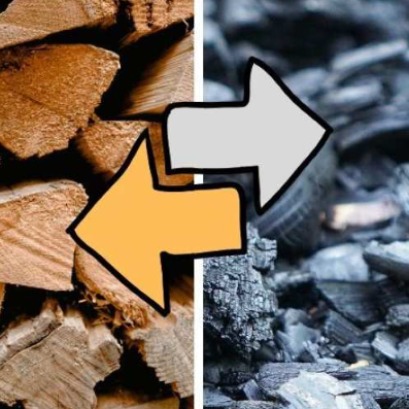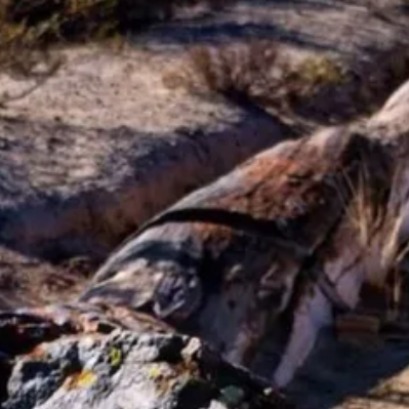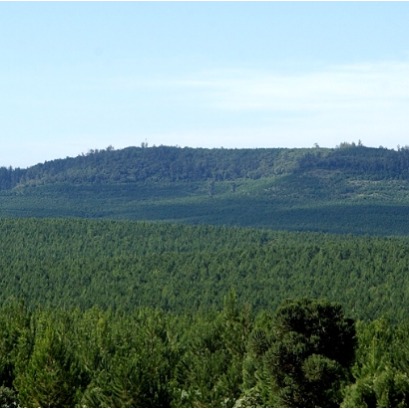
Canadian researchers make biochar from wood waste that rivals steel in strength
Researchers at the University of Toronto have developed monolithic biochar from wood that can reach an axial hardness of up to 2.25 GPa, similar to mild steel.
• Biochar at the level of hardness of steel.• Wood as a structural model.• Waste converted into strong materials.• Directional force: key to performance.• Potential in energy, construction and filtration.• Bio-based green technology.Wood biochar reaches hardness comparable to steel: a milestone in sustainable materialsWood, that humble resource that has supported structures and heated homes for centuries, has just revealed a new face. Researchers at the University of Toronto have managed to convert it, through a thermal process, into a carbon material with mechanical resistance similar to that of mild steel. The key: preserve the natural architecture of the tree. Structure is everything Advancement is based on a simple but powerful principle: direction matters. When the hardness of biochar is measured along the grain of the log, the results change dramatically. In some cases, up to 28.5 times harder than in the perpendicular direction. This behavior is called mechanical anisotropy, and reveals that the secret of biochars performance is not so much in its chemical composition, but in its internal structure, inherited from the wood itself. By preserving the microscopic channels and the arrangement of plant cells, carbonized biochar imitates the natural engineering of its raw material. It is, in essence, a functional fossil of the original wood, but now with properties that make it viable in demanding environments, from structural components to energy systems. Nature as a design blueprint The team led by Professor Charles Jia of the Green Technology Laboratory worked with seven different plant species, including maple, pine, bamboo and the dense African ironwood. By subjecting them to temperatures between 600 °C and 1,000 °C, they observed how the combination of species and temperature affected the hardness, density and carbon content of the biochar. Especially notable was African ironwood, which reached an axial hardness of 2.25 gigapascals, a figure comparable to that of mild steel, one of the most common materials in construction. Another interesting finding: at the nanoscopic level, all the samples had similar hardnesses, which suggests that the difference It is not in the resistance of carbon as such, but in how its pores and fibers are organized. Much more than a fertilizer Biochar has traditionally been known as a soil improver or decontamination agent. But this study breaks that limited vision and positions it as a versatile structural material. Its advantage is twofold: on the one hand, it comes from plant residues, such as pruning remains, agricultural by-products or forestry waste. On the other hand, its production process, pyrolysis, can be adapted to obtain specific properties, playing with variables such as temperature or raw material. This opens the door to light but resistant materials, which could be used in filters with directional flows, electrodes in energy storage systems or structural composites that require rigidity in one axis and flexibility in another. In a world saturated with plastics and metals with a high carbon footprint, biochar is presented as an alternative with low environmental impact, high functionality and renewable origin. Examples that are already underwayAlthough the study is recent, some developments point in this direction. Projects such as Charm Industrial in the United States already work with biochar to capture carbon in the long term, injecting it into deep soils. On the other hand, researchers in Sweden and Germany are experimenting with building blocks and thermal insulation based on biochar, taking advantage of its resistance and its ability to regulate humidity. PotentialStructural biochar represents real progress towards a cleaner and more resilient economy. Here are some concrete ways you can make a difference:• Using agricultural and forestry waste, turning waste into useful materials.• Reducing emissions associated with the production of steel and cement, two of the most polluting sectors.• Designing biodegradable or easily recyclable products, instead of relying on petroleum-derived polymers.• Carbon capture and storage, as biochar is stable and can retain atmospheric carbon for centuries.• Use in rural or emergency infrastructure, where local availability of biomass can replace conventional materials with high energy costs. The lesson is clear: nature has already solved many of the challenges of modern engineering, you just have to know how to read its code. This discovery not only puts biochar on the radar of architects and engineers, but also reminds us that the future can be more resilient, if built from what is already naturally strong.
IT MAY INTEREST YOU
 The forest of the oldest shadows: the story of the petrified trees
The forest of the oldest shadows: the story of the petrified trees
One of the natural treasures of Río Negro turns 23 years old under the protection law that allows its conservation. Where it is and how it was formed. Río Negro celebrates 23 years of conservation in the petrified forest as a Protected Natural Area (ANP). It is a space of 625 hectares that protects an exceptional site of fossil trunks that date back more than 60 million years.
 The second largest wetland in South America is located in Argentina: what is it?
The second largest wetland in South America is located in Argentina: what is it?
Argentina has national parks that place it in a unique position within South America, competing with 300 others. Which is the largest? South America is home to more than 300 national parks, but many go unnoticed. There are extensive wetlands that have been the subject of major ecological restoration projects, to coastal mountains with deep indigenous heritage. Today we tell you the case of one located in Argentina.
 Free seminar on the implementation of the European EUDR regulation on deforestation-free wood products
Free seminar on the implementation of the European EUDR regulation on deforestation-free wood products
The Argentine Forestry Association (AFoA) organizes the seminar «EUDR in Forest Products: Current status of implementation. Regulatory requirements and private experiences", which will take place on Wednesday, November 26, from 11:00 a.m. to 12:00 p.m., via Zoom, with live streaming on YouTube. The European Regulation on Deforestation-Free Products (EUDR) will enter into force on December 31, 2025 and will impose new requirements for forest products entering the European Union market.





















